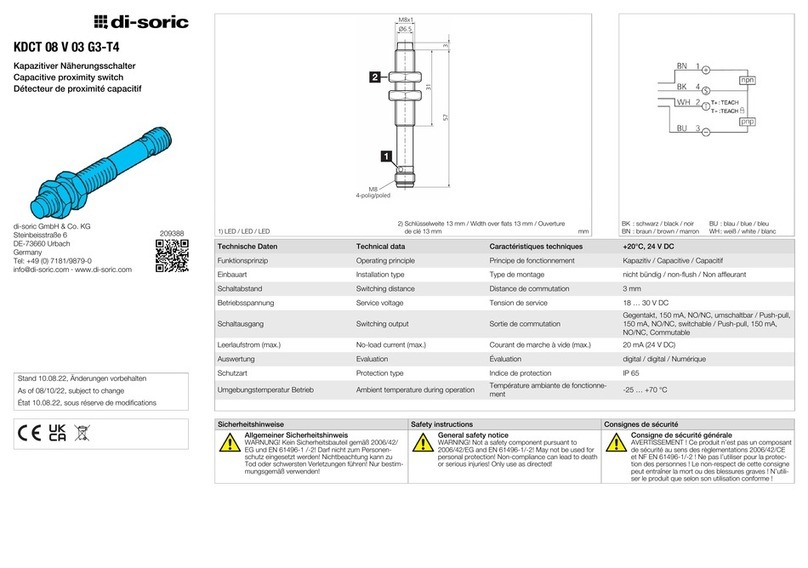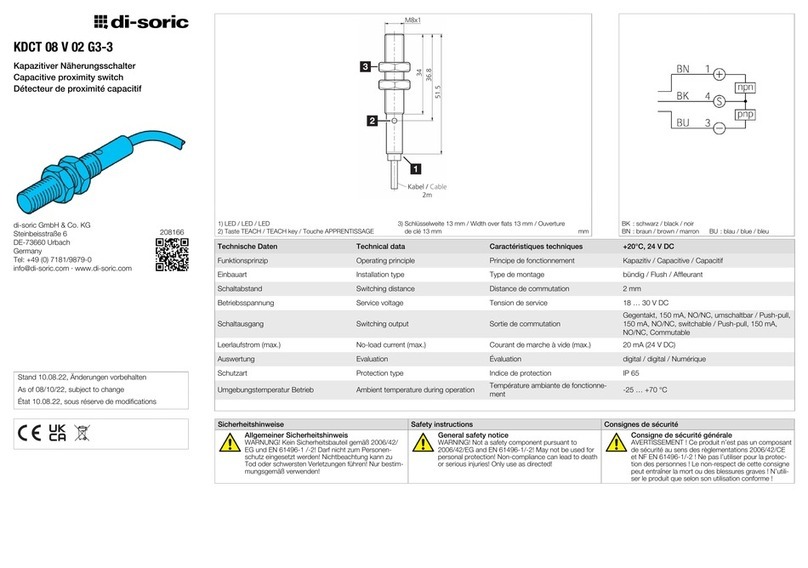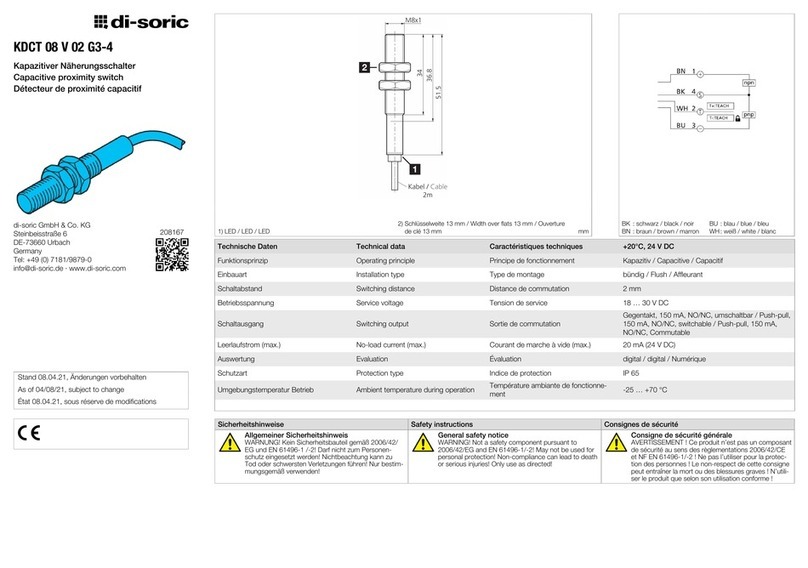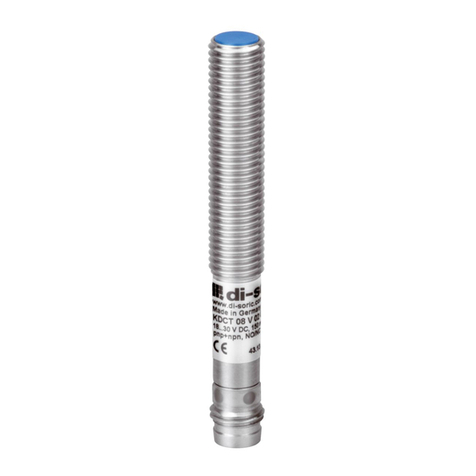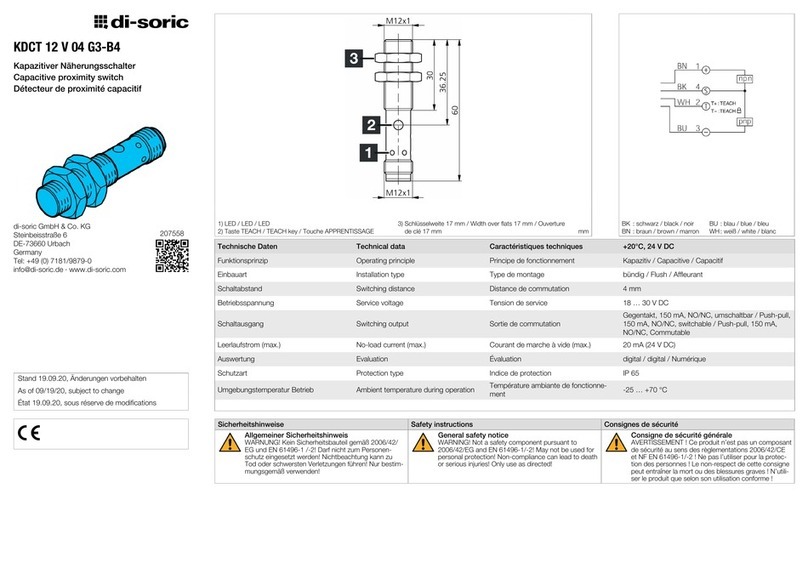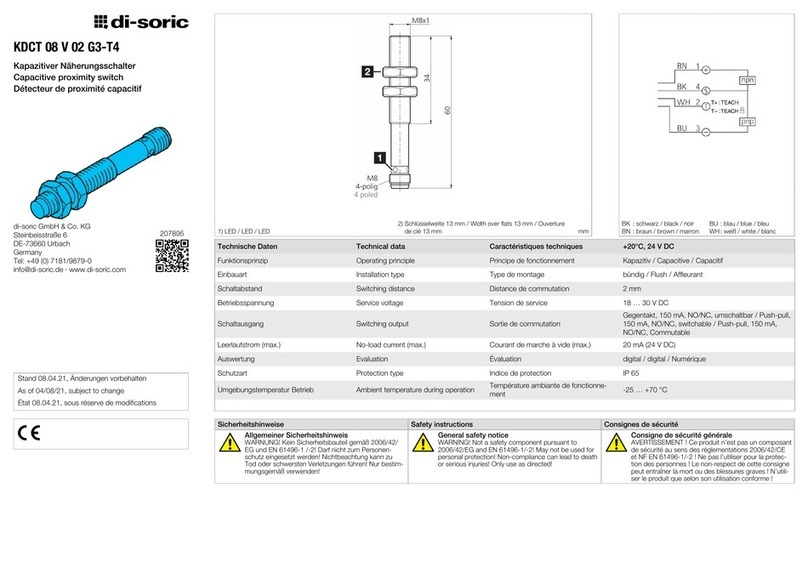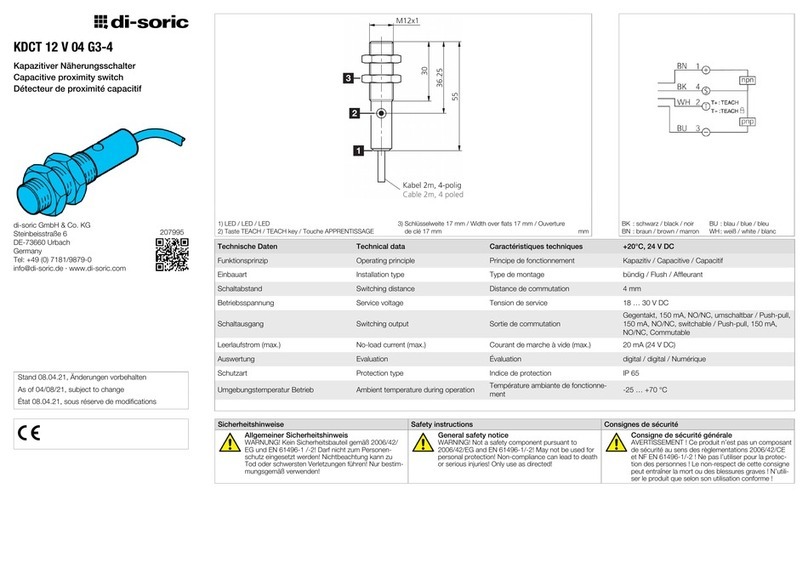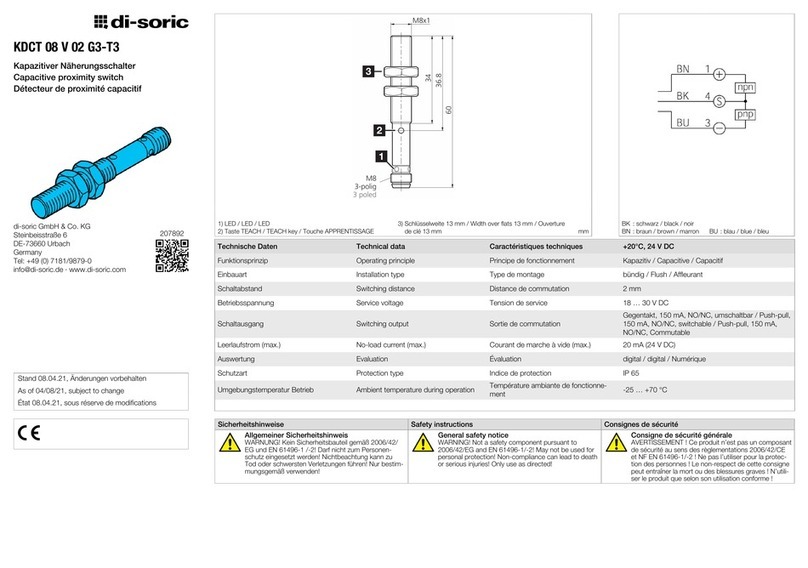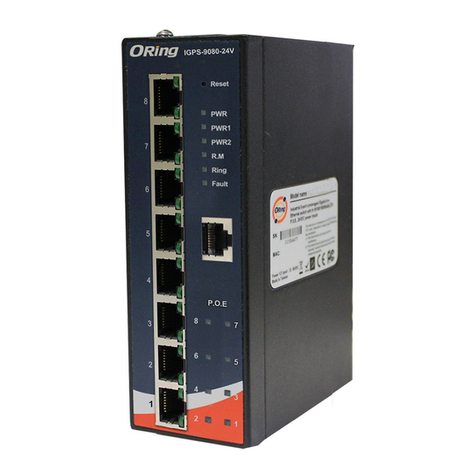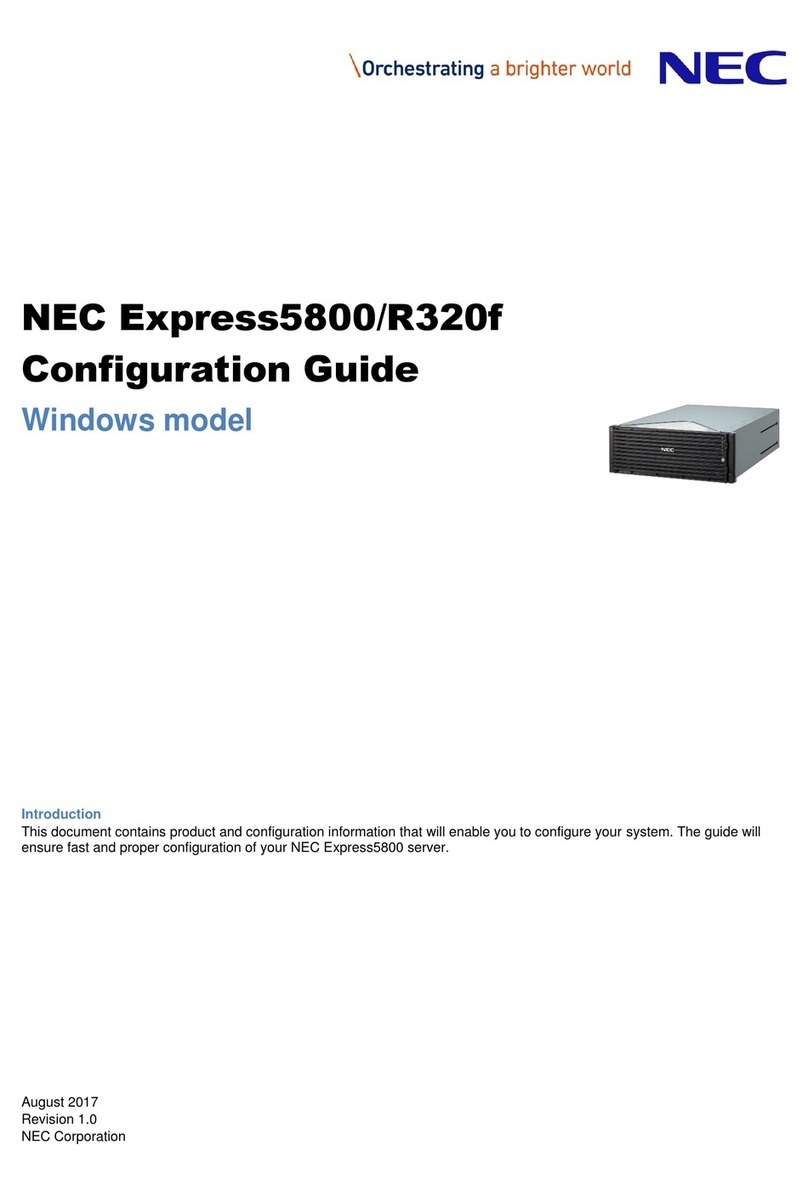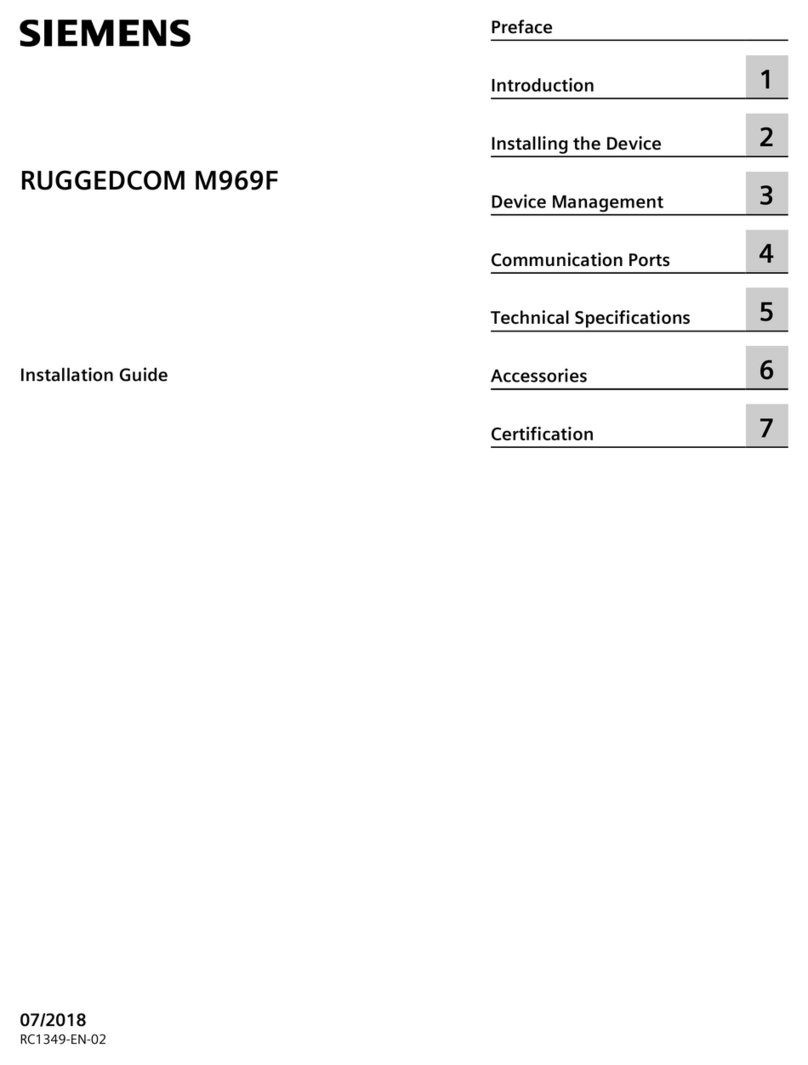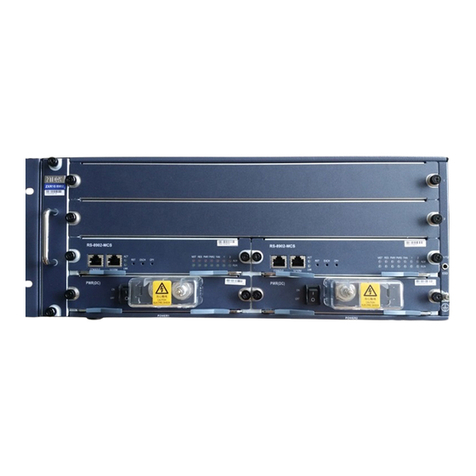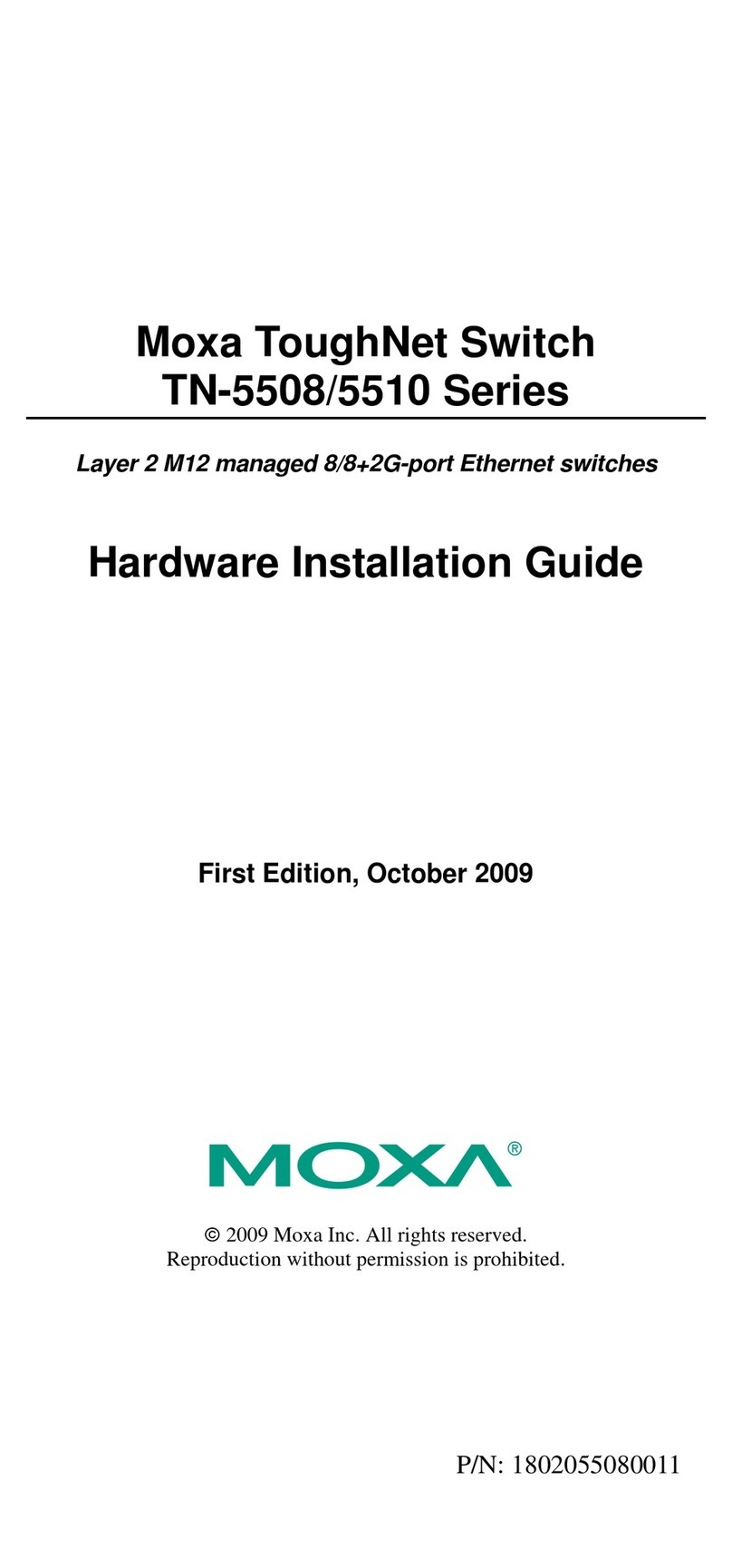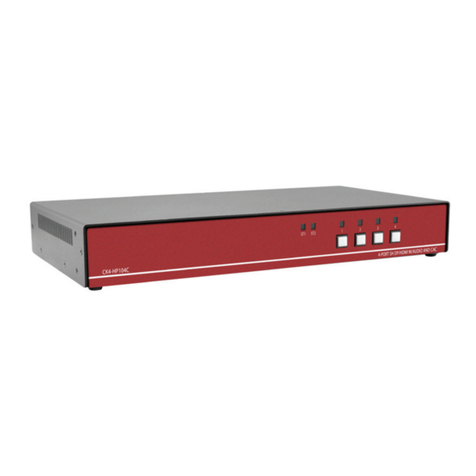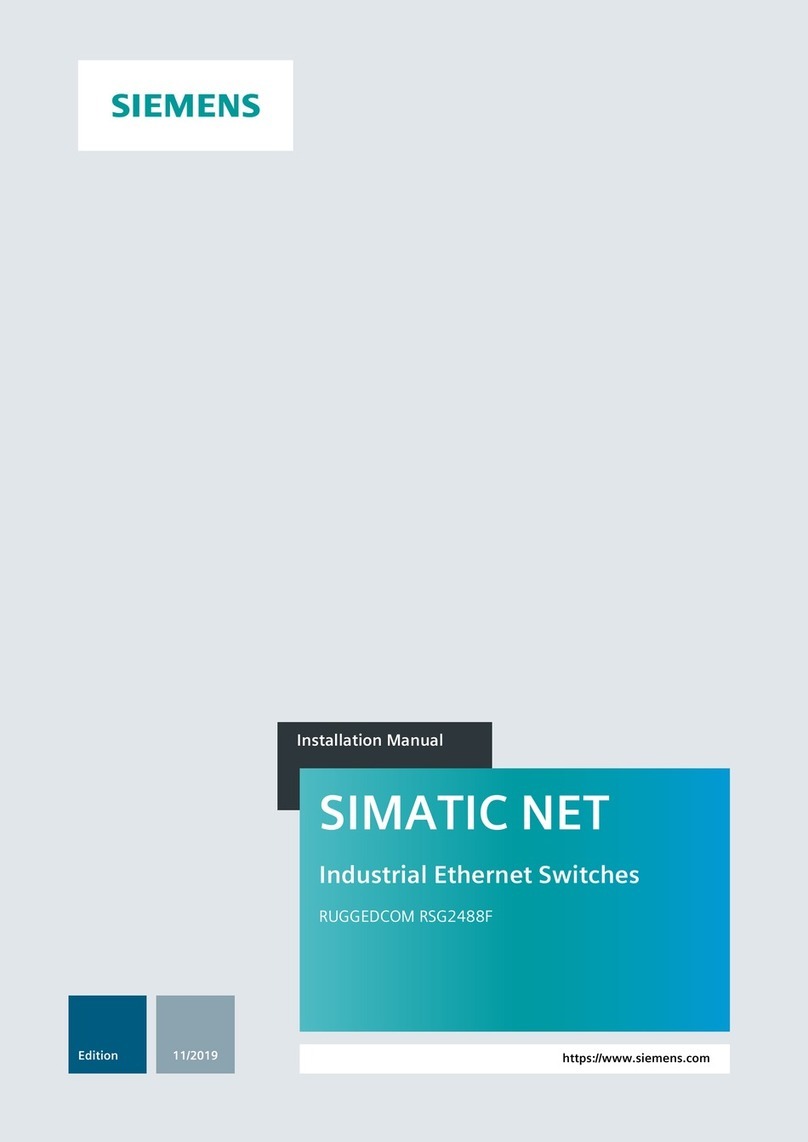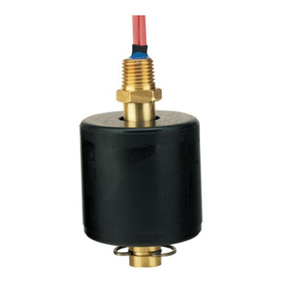
Kapazitiver Näherungsschalter Capacitive Proximity Switch Détecteur capacitif de proximité
KDCT 6.5 … KDCT 08 …
Näherungsschalter montieren und die Versorgungsspannung
anlegen.
Mount the proximity switch and connect to power. Monter et raccorder le capteur.
Definition Zustand 1 und 2: Definition state 1 and 2: Définition de la position 1 et 2 :
Mit externer Teach-Leitung: With remote teach: Avec la fonction Teach externe :
Zustand 1 herstellen
High-Pegel auf Pin 2 legen. Die LED leuchtet.
Nach Entfernen des High-Pegels von Pin 2 wird Zustand 1
gespeichert. Die LED blinkt schnell und fordert zur Eingabe
für Zustand 2 auf.
Zustand 2 herstellen
Innerhalb 20 Sek. erneut High-Pegel kurz auf Pin 2 legen.
Nach Entfernen des High-Pegels von Pin 2 wird Zustand 2
gespeichert.
Create state 1
Set high peak to Pin 2. The LED flashes.
After disconnecting the high peak from Pin 2, state 1 is
stored. The LED quickly flashes and the command for state
is requested.
Create state 2
Set Pin 2 again within 20 sec. to high peak.
After disconnecting the high peak from Pin 2, state 2 is
stored.
Création de la position 1 :
Appliquer une tension à la borne 2. Les LED clignotent.
Après deconnexion de la borne 2, la position 1 sera enre-
gistrée.
Les LED clignotent et la position 2 est à définir.
Création de la position 2 :
Appliquer la tension une nouvelle fois
Après déconnexion, la position 2 sera enregistrée.
LED-Anzeige: LED-Display: Indications LED :
2x Blinken: Der Teach-Vorgang ist abgeschlossen, der
Sensor nimmt seinen normalen Betrieb auf.
2 x flashing: The teach procedure is finished, the sensor
runs in regular operation
Clignotement
2x
La procédure d‘apprentissage est terminée,
le capteur retourne en mode de fonction-
nement.
Der Schaltpunkt (SP) liegt zwischen Zustand 1 und 2.
Die Größe der Hysterese ist abhängig von der Differenz
zwischen Zustand 1 und Zustand 2.
Größerer Unterschied --> größere Hysterese
The switching point (SP) is between state 1 and 2.
The size of the hysteresis depends on the difference between
state 1 and state 2.
Larger difference –> larger hysteresis
Le point de commutation (SP) se situe entre la position 1 et 2.
L‘hystérésis dépend de la différence entre la postion 1 et la
position 2.
Large différence –> large hystérésis
Alle Zustände gelten für den Betrieb „NO“ (Auslieferungs-
zustand); bei Betrieb „NC“ verhält sich der Schaltausgang
umgekehrt.
All states are valid for „NO“ (condition of supply) when
running on “NC” the switching output is vice versa.
Par défaut, le fonctionnement de la sortie est NO, il est
possible d‘inverser son fonctionnement.
Betriebsart NO/NC-Umschaltung:
Plus U
b
(Betriebsspannung) für 6 Sek. an die Teachleitung
anlegen, die LED blinkt 3x, der Sensor wechselt in die andere
Betriebsart.
Change of mode NO/NC:
Connect Plus U
b
(service voltage) to teach wire for 6 sec.
The LED flashes 3 times, the sensor switches to the other
mode.
Fonctionnement NO/NC :
Connecter Ub (alimentation) à la borne Teach pendant au
moins 6 sec. Les LED clignoteront 3 fois.
Après déconnexion, le capteur changera le mode de fonc-
tion.
